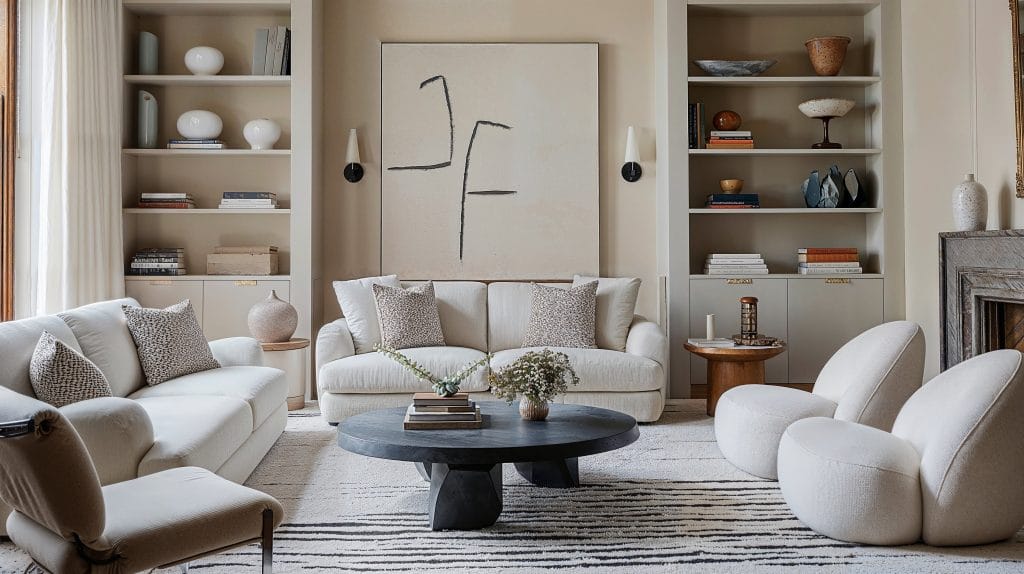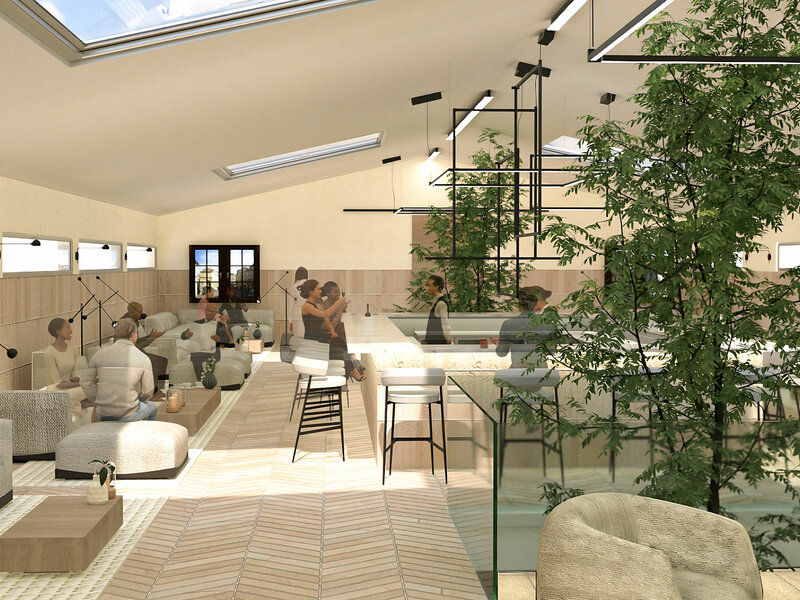Work with experts in miami luxury interior design for high-end home and commercial projects.
Change Your Home With Necessary Concepts of Inside Layout and Visual Appeals
The art of transforming your home via the necessary concepts of indoor layout and aesthetics requires a thoughtful approach that integrates shade, equilibrium, and spatial recognition. By recognizing the influence of shade concept and the significance of appearance and patterns, one can develop spaces that are not only visually attractive however additionally deeply individual. Achieving this stability includes greater than plain design; it includes a tactical setup and a keen understanding of how each element communicates within an area. As we check out these foundational ideas, take into consideration just how they may redefine your understanding of home and individual expression.
Comprehending Shade Concept
Color concept is a fundamental facet of interior decoration that substantially affects state of mind, perception, and general aesthetic. Comprehending the concepts of color theory enables developers to create spaces that resonate mentally with passengers while satisfying useful demands (miami luxury interior design). Shades can be categorized into 3 key kinds: main, second, and tertiary. Each classification plays a vital duty in establishing harmony within a space.
The emotional impact of colors is profound; cozy colors such as reds and oranges evoke energy and warmth, while awesome tones like blues and eco-friendlies advertise calmness and peace. In addition, using corresponding shades boosts aesthetic interest, creating striking contrasts that can boost a space's charm.
Neutral shades, on the various other hand, offer as a flexible background, enabling other style components to beam. It is important to take into consideration factors such as lights and the room's purpose when choosing a shade palette, as these can modify the assumption of shades throughout the day.
Inevitably, a well-considered color pattern can transform a space, fostering a feeling of comfort and style that aligns with the occupants' choices. Proficiency of color concept is, therefore, a crucial ability for any type of interior designer intending to create harmonious and welcoming atmospheres.
Attaining Balance in Style
How can designers attain a feeling of balance in their spaces? Accomplishing equilibrium in layout is fundamental to producing harmonious insides. Designers can make use of 3 primary sorts of equilibrium: balanced, unbalanced, and radial. In proportion balance entails setting up components uniformly around a main factor, fostering a sense of order and tranquility. This kind typically includes sets of furnishings or art work, enhancing visual security.
Asymmetrical balance, on the various other hand, counts on varying elements that still achieve a cohesive look. This strategy permits for more vibrant and casual setups, supplying rate of interest while maintaining equilibrium. By very carefully choosing differing sizes, colors, and structures, designers can create a visually compelling space that really feels balanced yet energetic.
Radial balance highlights a main centerpiece with components emitting exterior. This style is commonly seen in circular designs, where furniture and decor produce a natural surround that attracts the eye internal.
Inevitably, attaining balance calls for thoughtful factor to consider of range, proportion, and the connections between elements. Architecture Firm. By masterfully using these equilibrium principles, designers can change spaces into atmospheres that really feel both cosmetically pleasing and functionally unified, improving the overall experience for residents
Value of Spatial Awareness

A keen feeling of spatial awareness enables developers to determine prime focus within a space, leading the audience's interest to crucial attributes while preserving an overall sense of unity. It also aids in the calculated positioning of lighting, which can significantly influence the perception of area and mood. Recognizing spatial connections allows the designer to provide to the specific needs of citizens, making certain that each location serves its designated function without compromising visual appeals.
Ultimately, spatial recognition is critical for optimizing the possibility of any kind of indoor room. By meticulously thinking about the interplay between dimensions, format, and feature, designers can create atmospheres that not only fulfill practical needs but also evoke a feeling of comfort and charm, enhancing the total living experience.
Incorporating Appearance and Patterns
Accepting a varied range of textures and patterns can substantially enhance the aesthetic and tactile charm of an interior area. The calculated use various materials-- such as timber, steel, material, and rock-- develops depth and passion, making a room feel a lot more welcoming and dynamic. Integrating smooth surface Visit This Link areas with harsh appearances can develop a balance that attracts the eye and engages the detects.
When integrating patterns, take into consideration both range and rep. Big patterns can offer as centerpieces, while smaller, subtle layouts can match various other components without overwhelming the space. Layering patterns, such as pairing flower paddings with candy striped tosses, adds complexity and a sense of harmony if carried out thoughtfully.
It is additionally vital to preserve a natural color scheme, guaranteeing that structures and patterns work with each other as opposed to compete for focus. By selecting a couple of key textures and patterns, you can produce an unified visual that reflects your individual design while enhancing the total setting of the room. Inevitably, the careful incorporation of these aspects can change an ordinary area into a sophisticated setting abundant with character and warmth.
Customizing Your Room
Producing a room that mirrors your character is important to attaining a truly inviting setting. Personalization in interior decoration allows you to infuse your special style and passions right into your home, changing it from a simple shelter into a shelter that talks to who you are. Begin by choosing a color palette that resonates with your feelings-- strong tones can energize, while soft tones use tranquility.
Include art work and decoration that reflect your passions, whether it be travel, nature, or abstract ideas. Displaying individual collections, such as publications, photographs, or mementos, can evoke valued memories and create centerpieces within an area. Additionally, take into consideration tailoring useful pieces, like upholstered furniture, to straighten with your aesthetic preferences.

Final Thought
In final thought, the transformation of a home via the necessary concepts of interior layout and appearance necessitates a detailed understanding of color theory, balance, spatial recognition, texture, and personalization. Each aspect adds substantially to developing a harmonious and practical living Visit Your URL environment - Architecture Firm. By thoughtfully integrating these principles, individuals can improve the aesthetic allure and emotional vibration of their rooms, ultimately promoting a home that reflects unique identifications while giving comfort and practicality